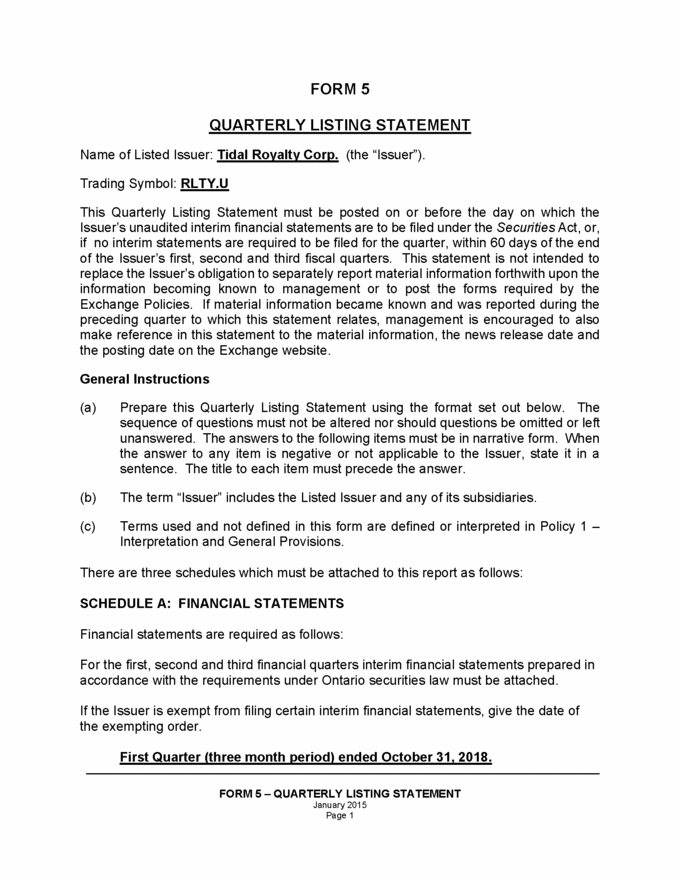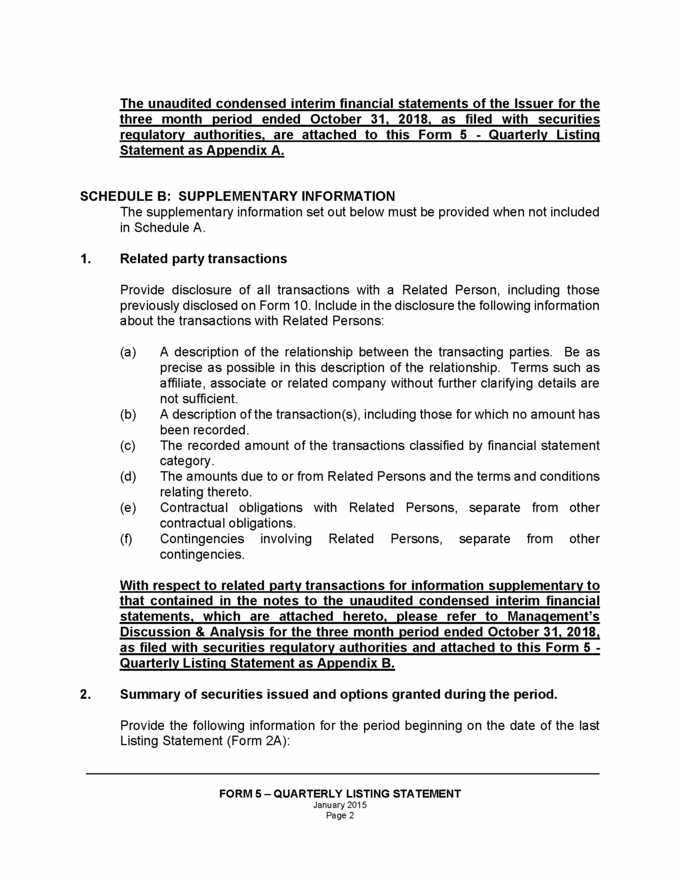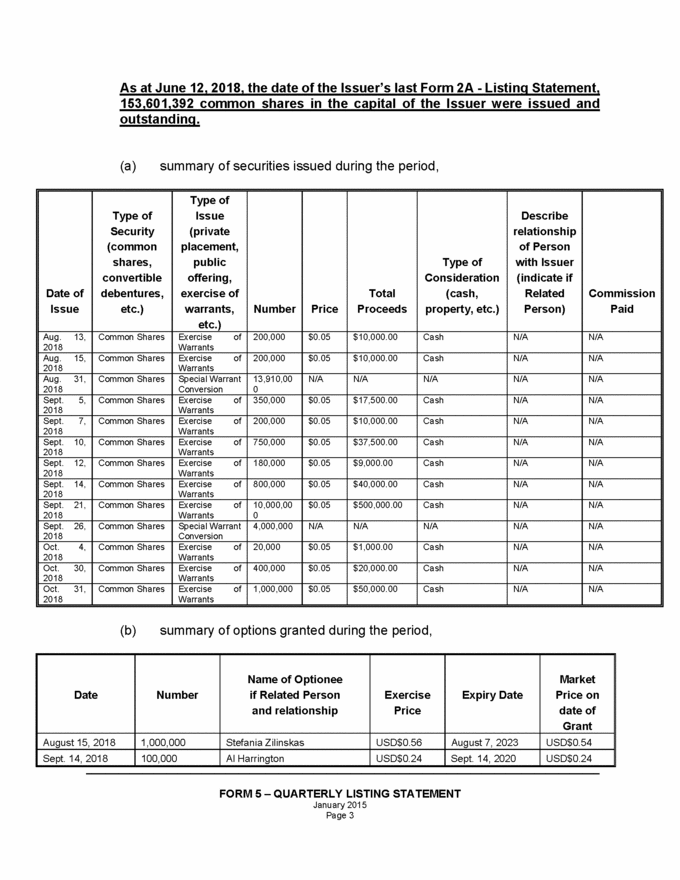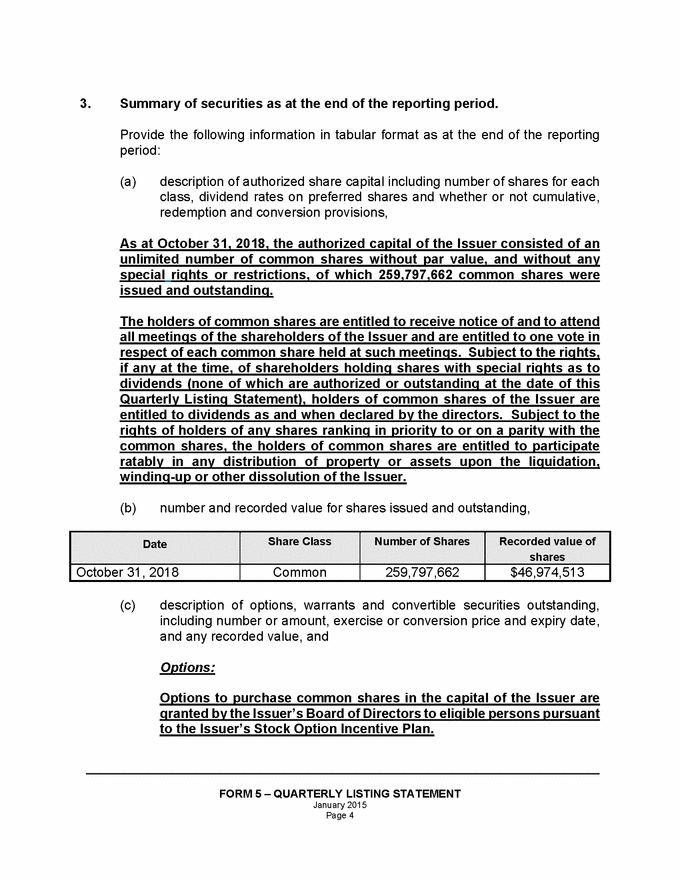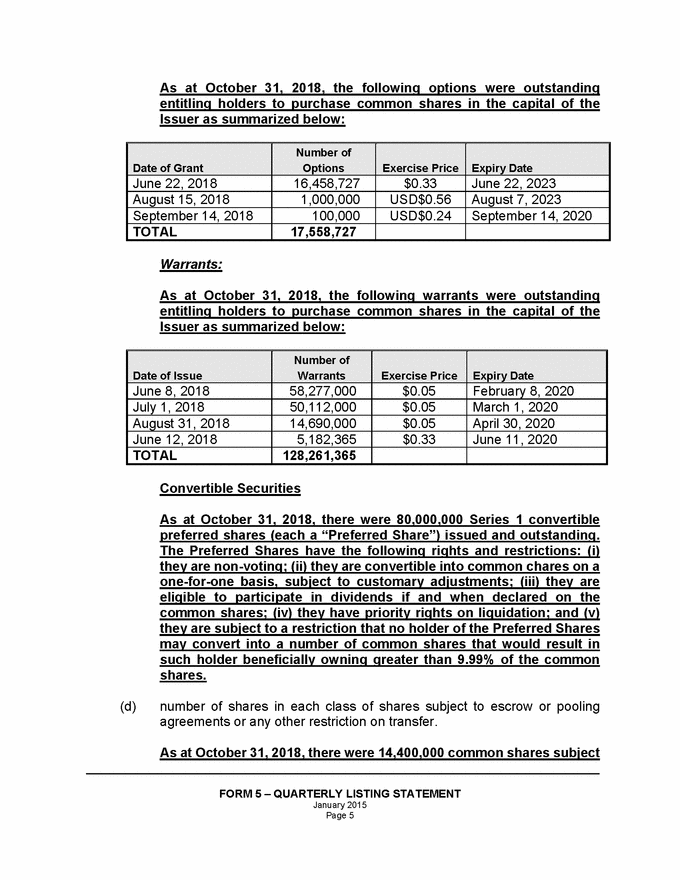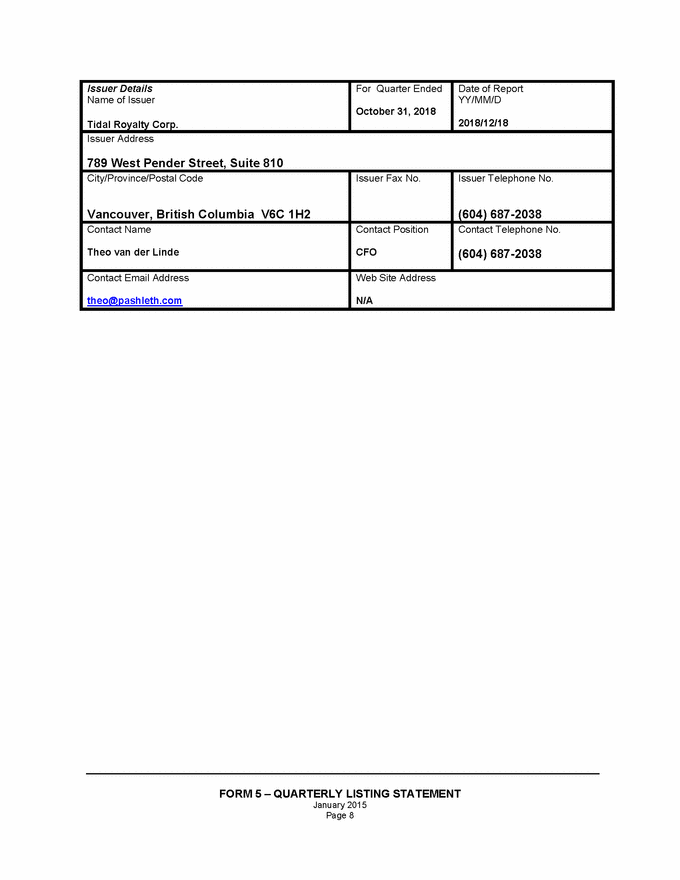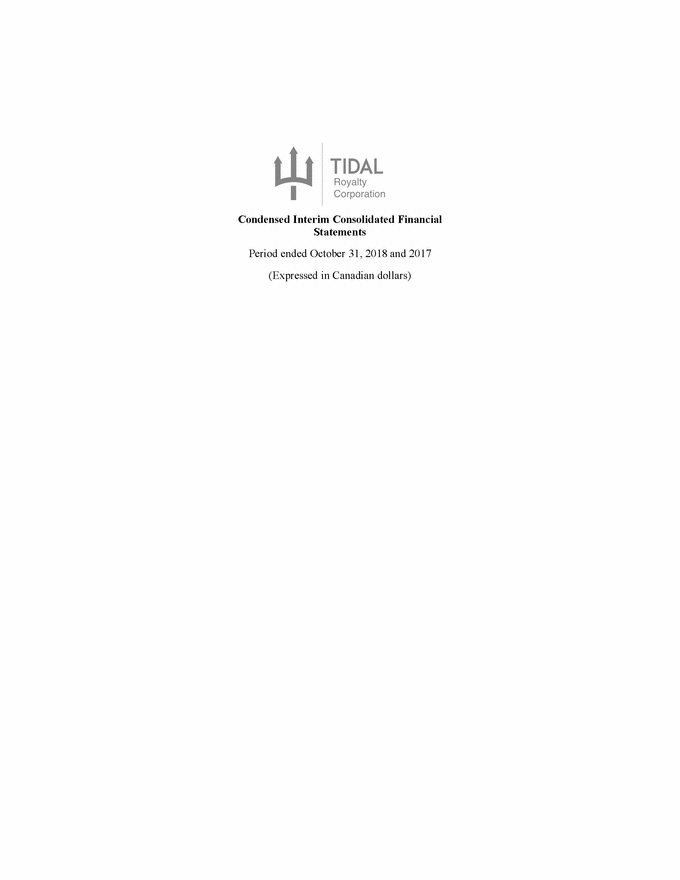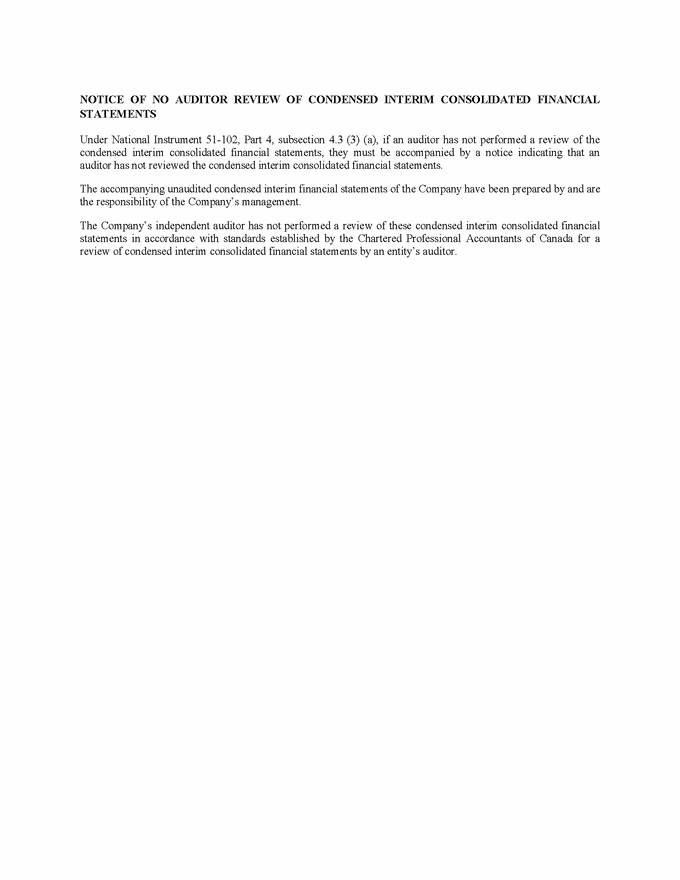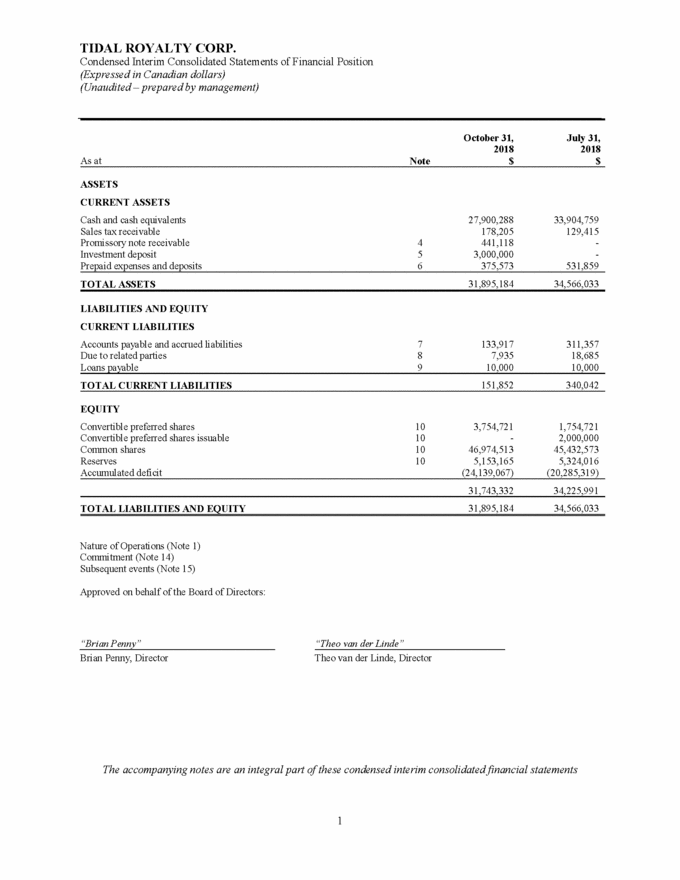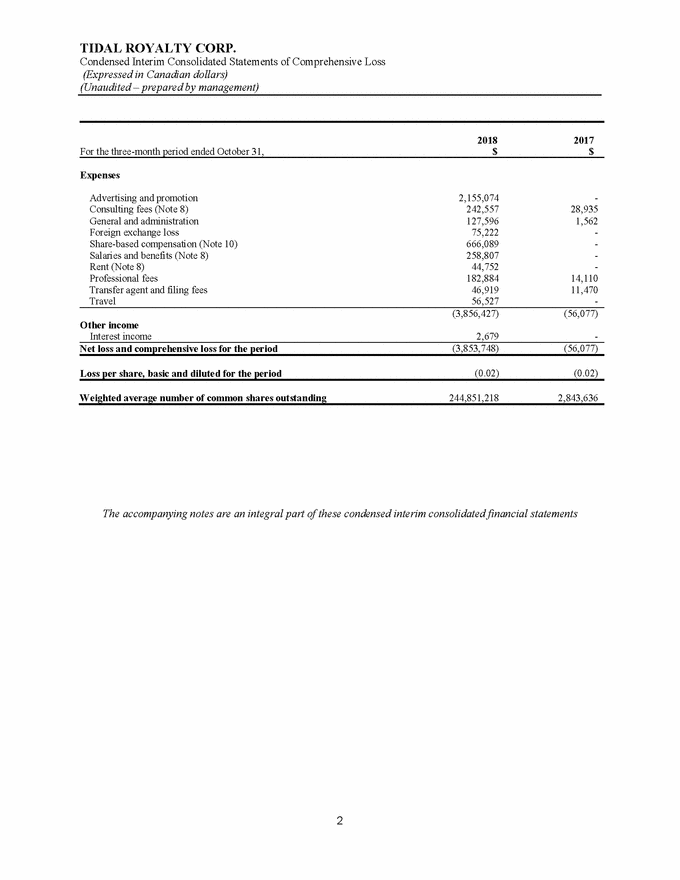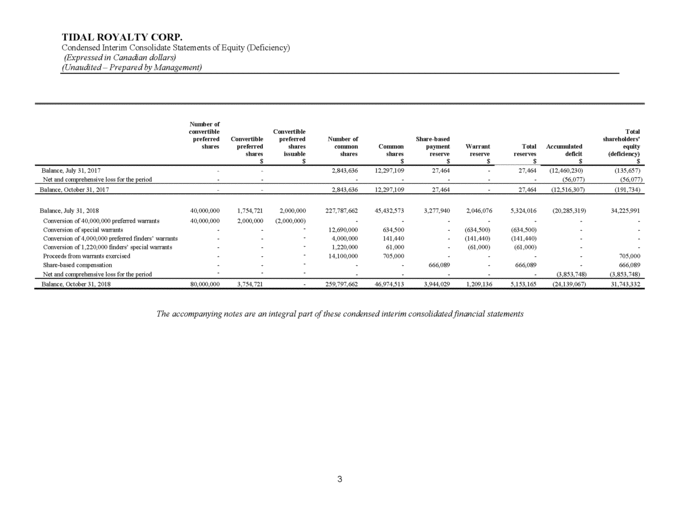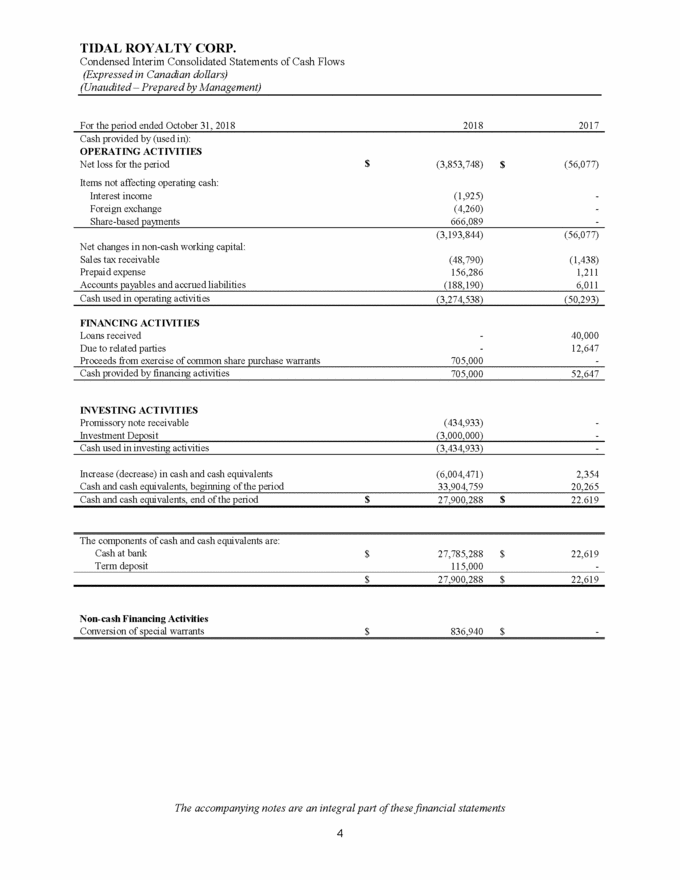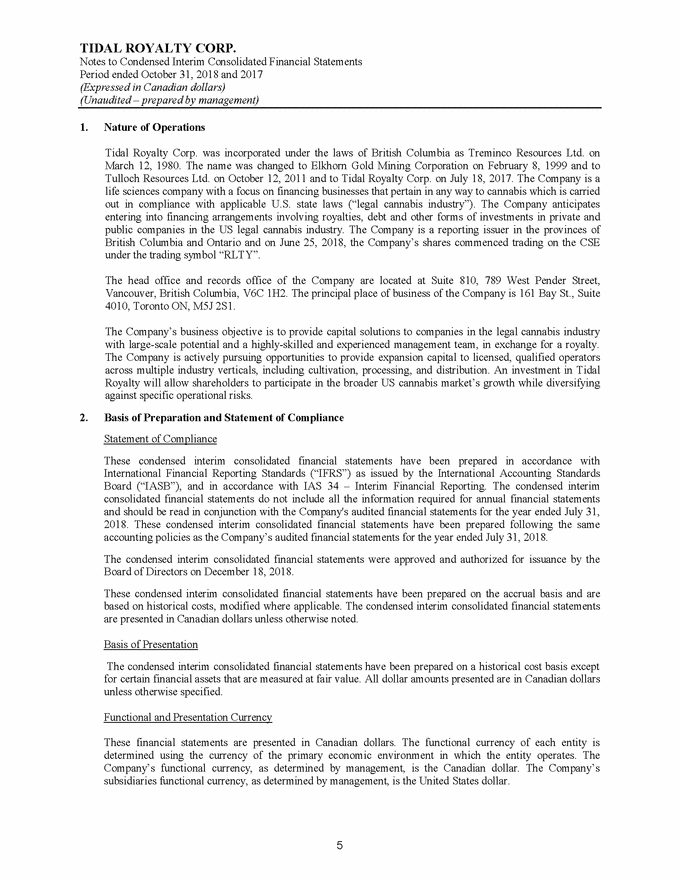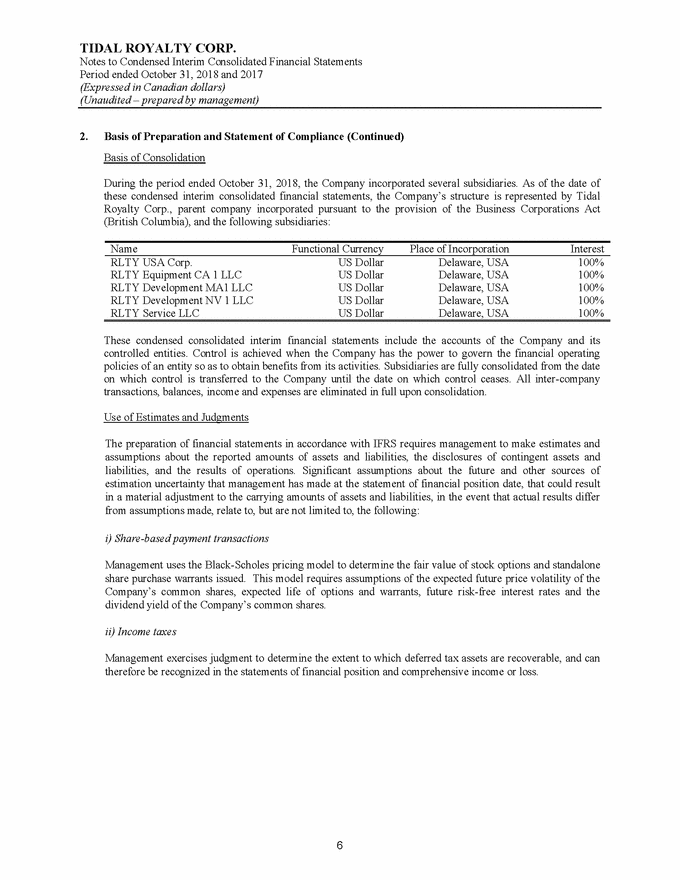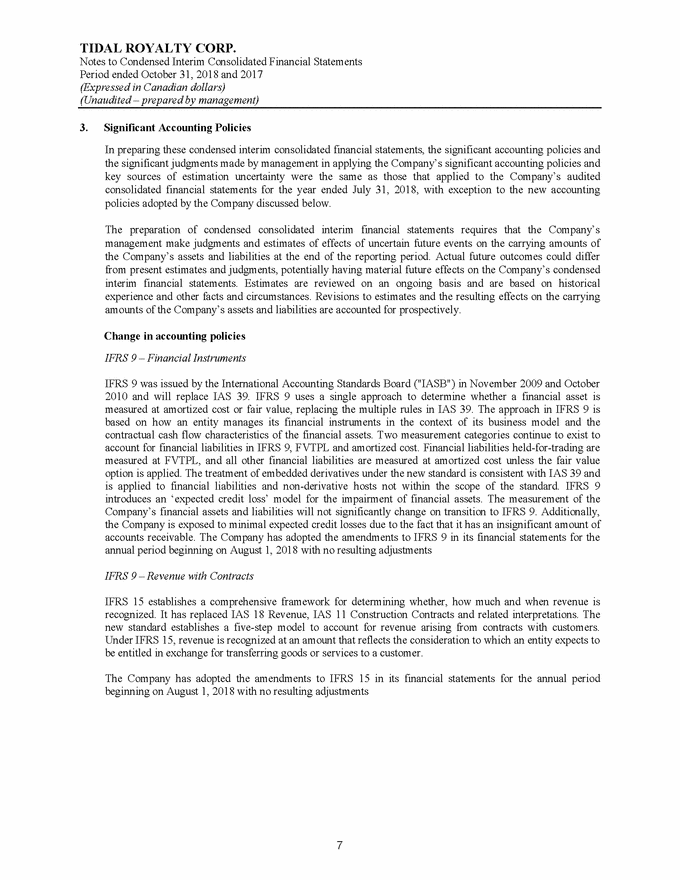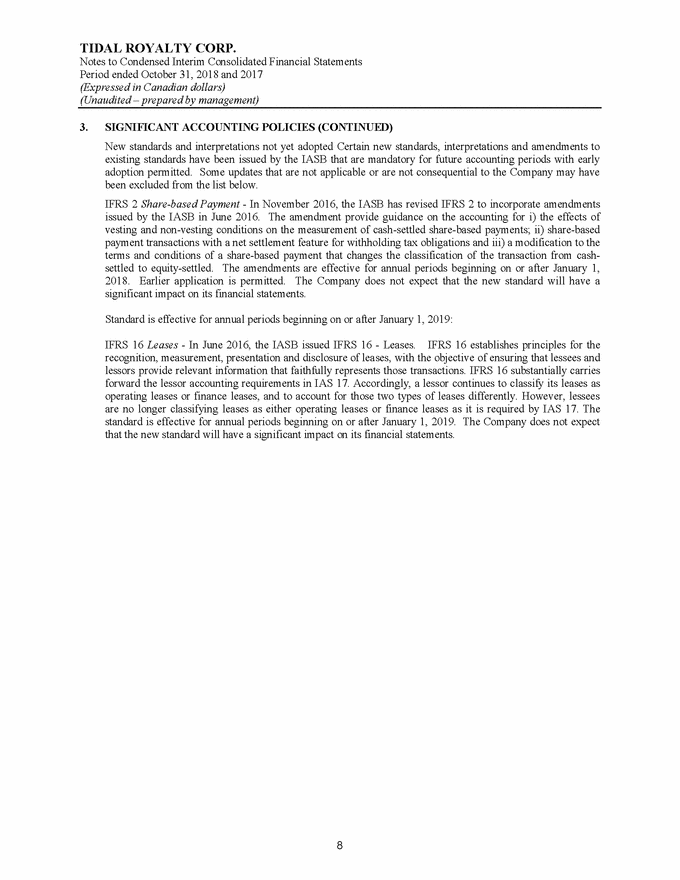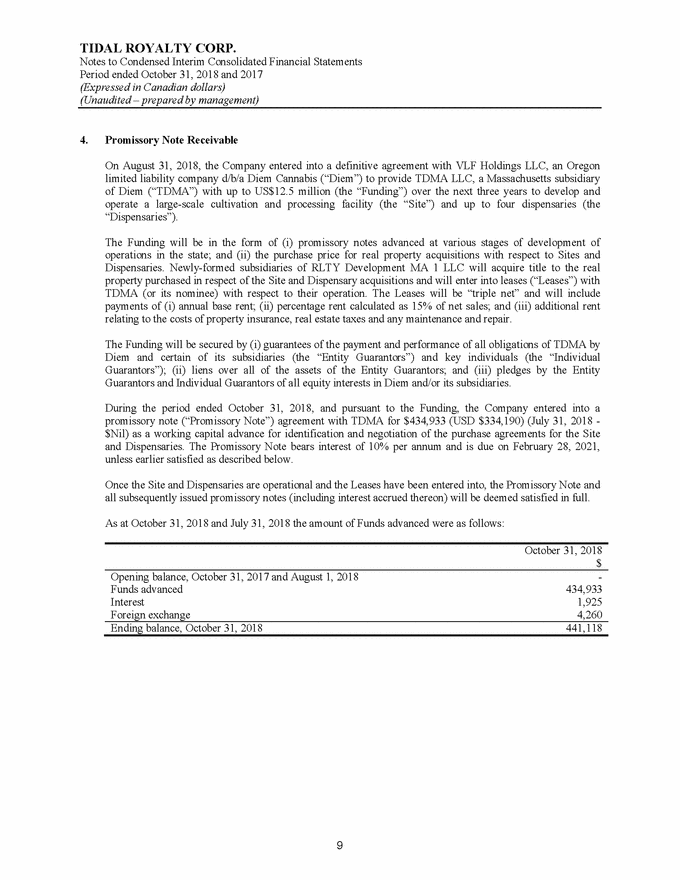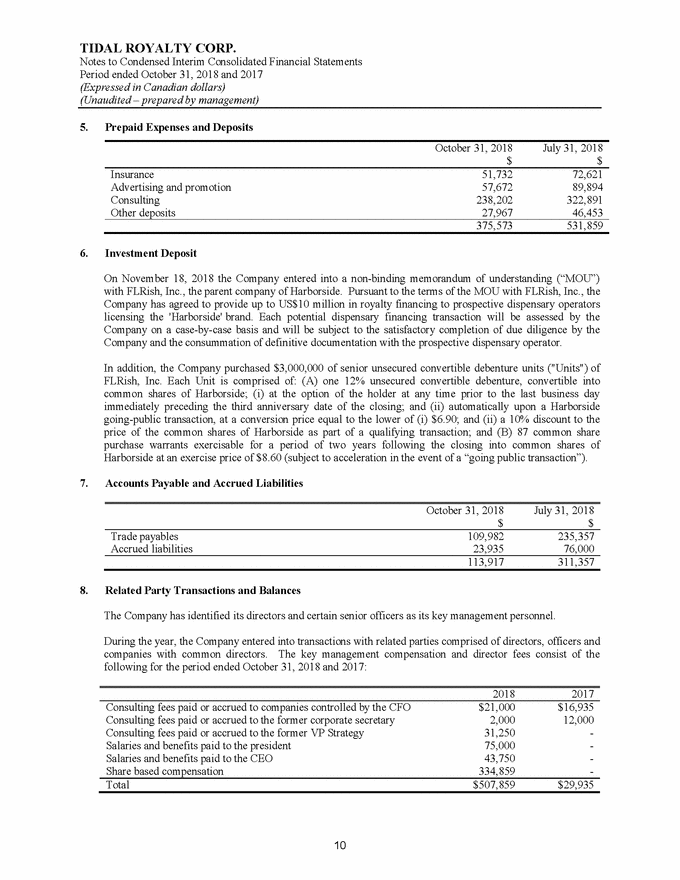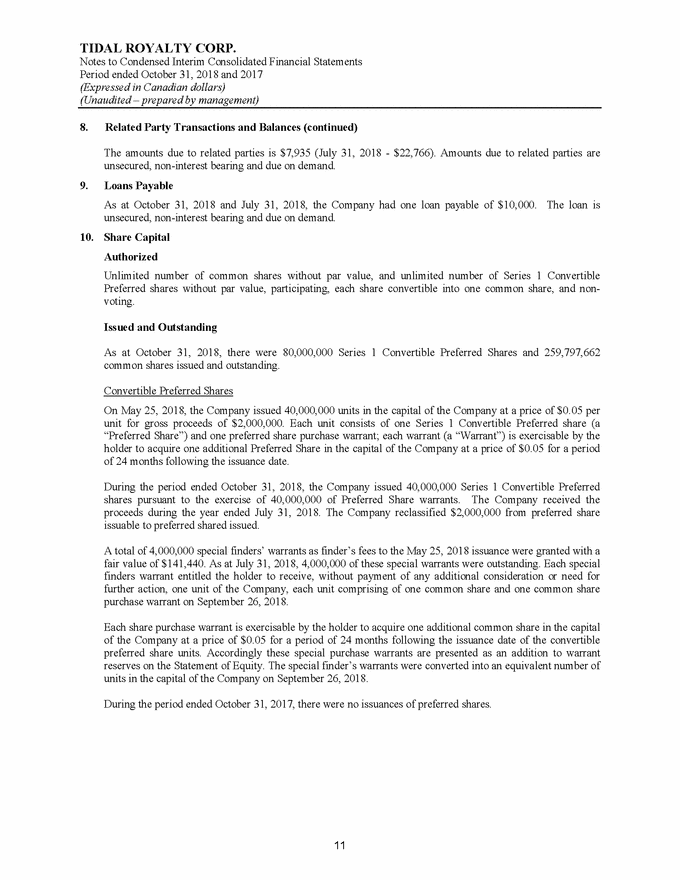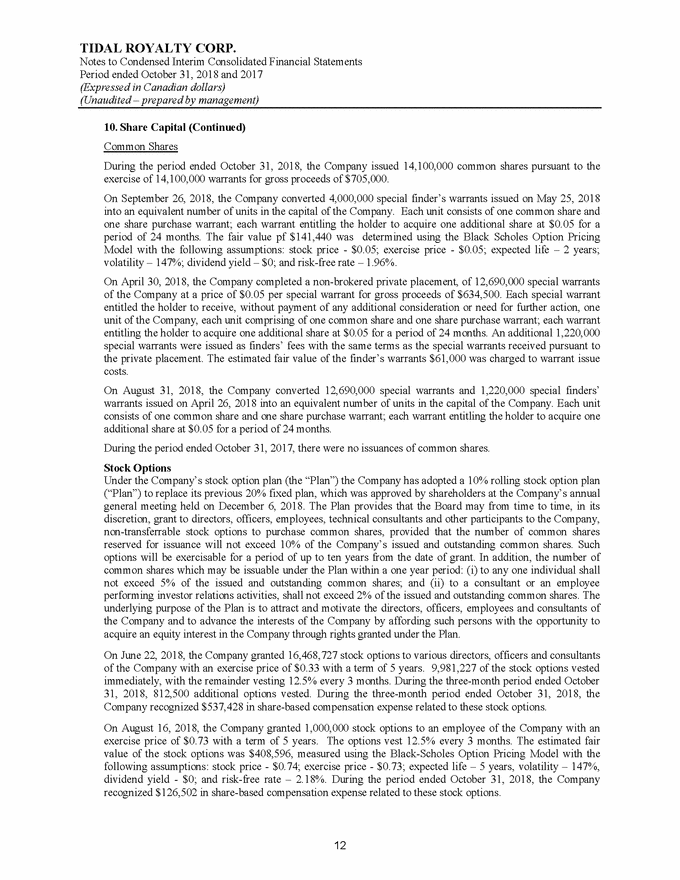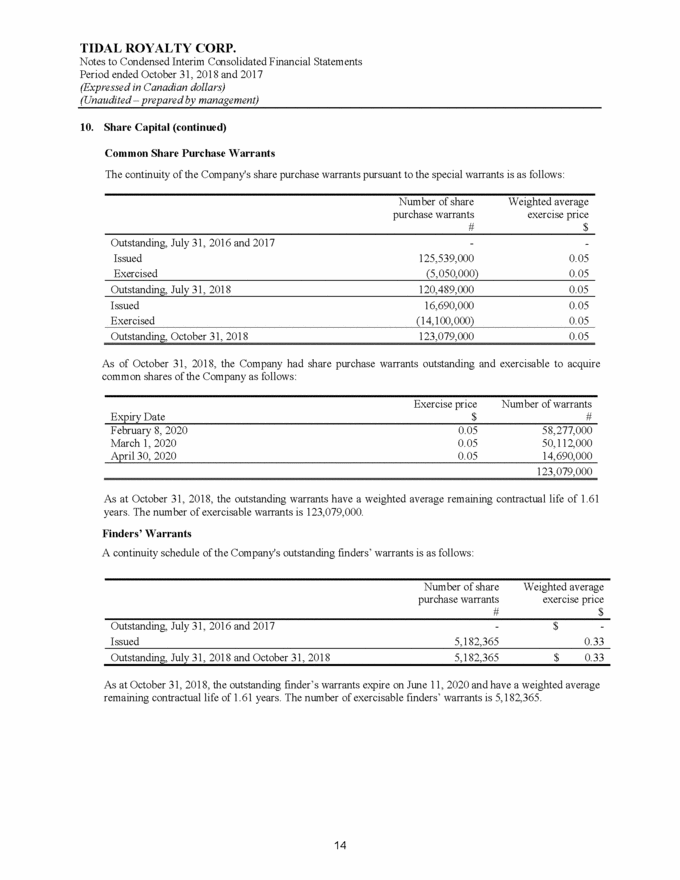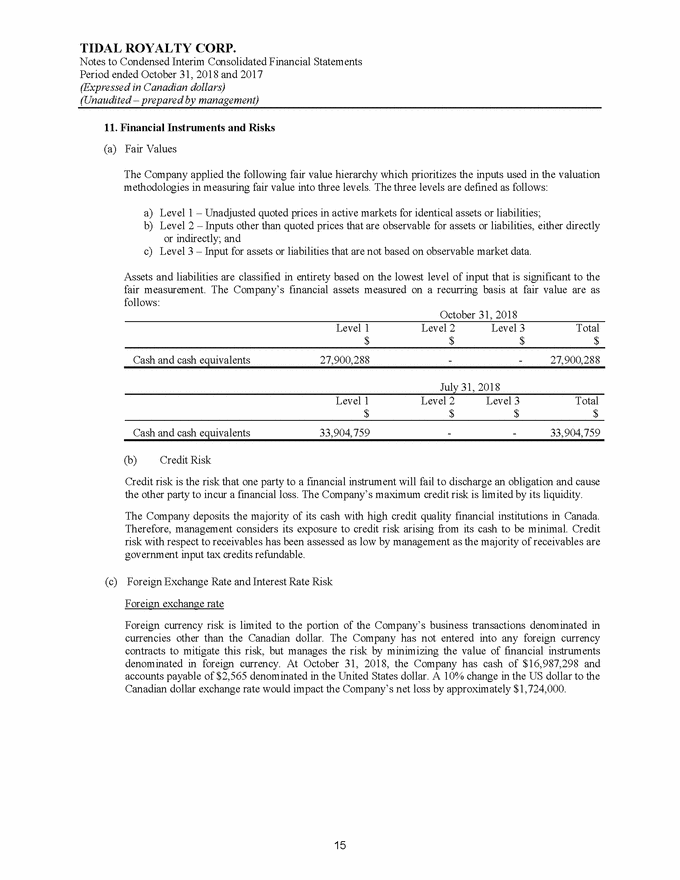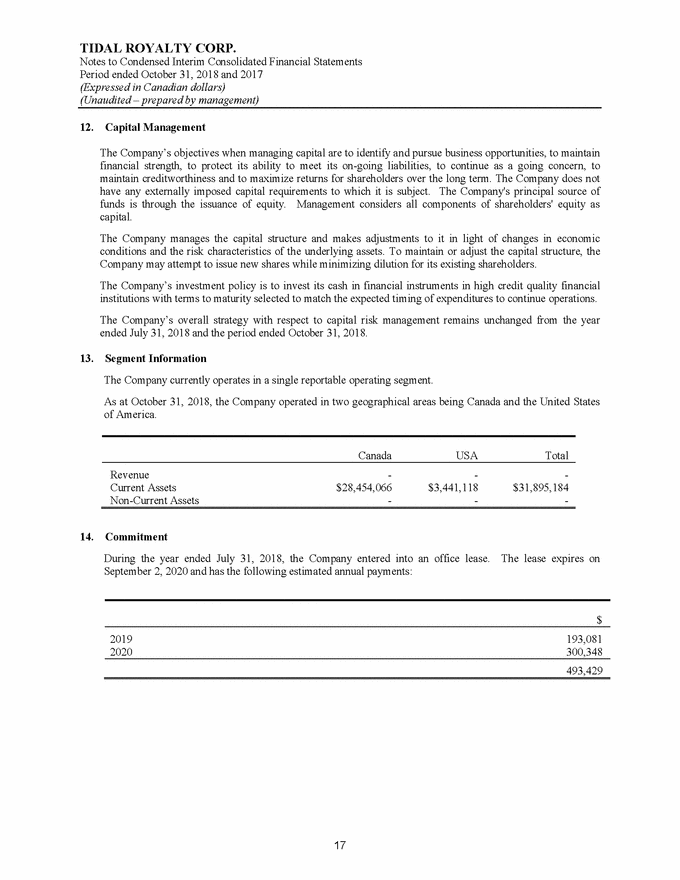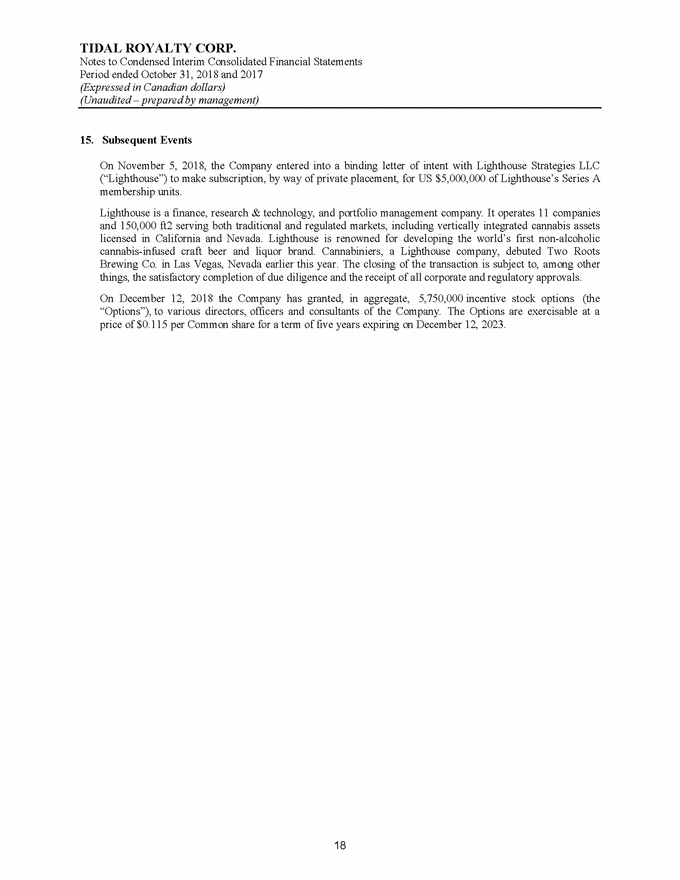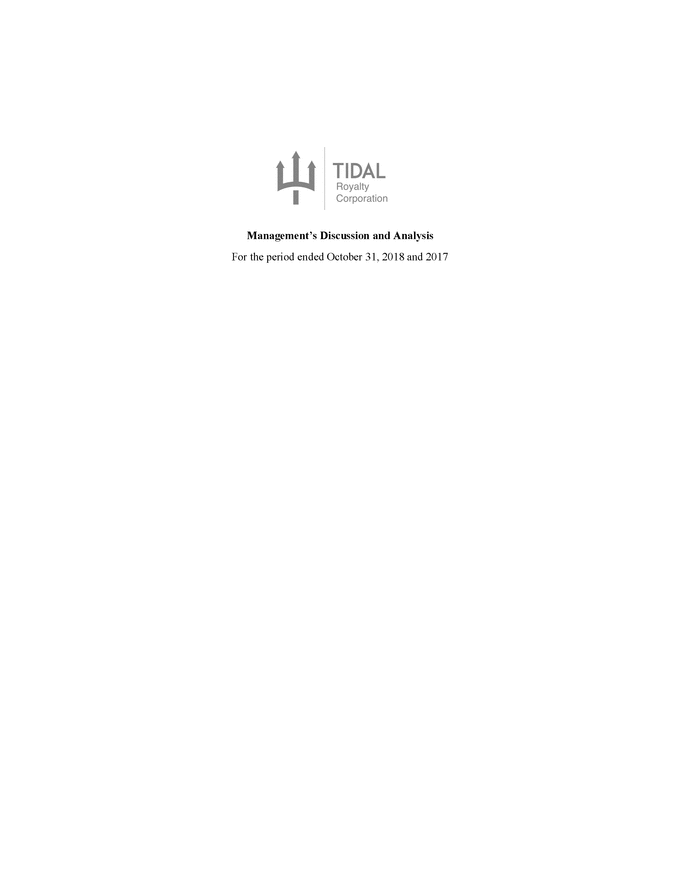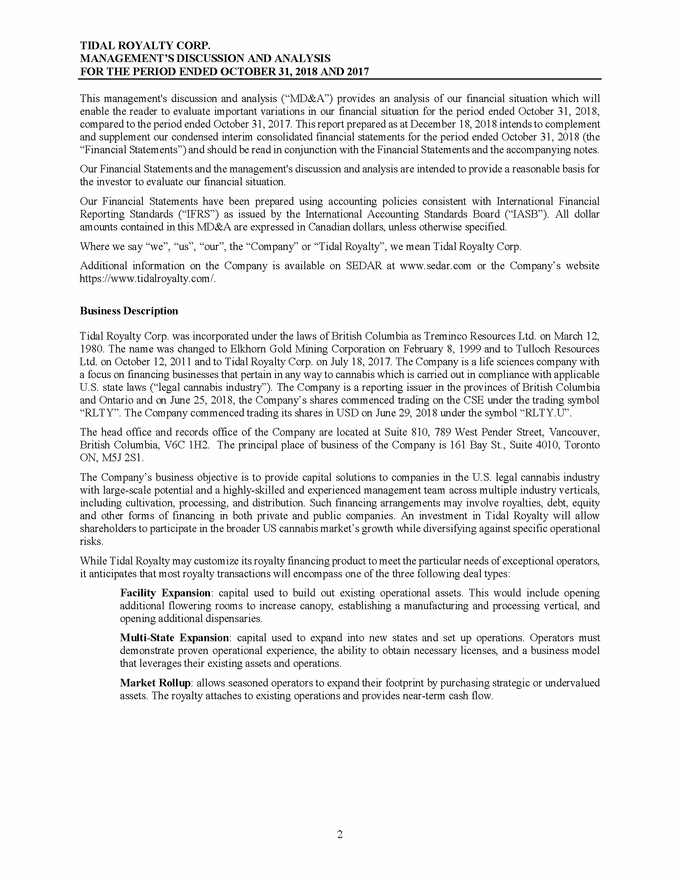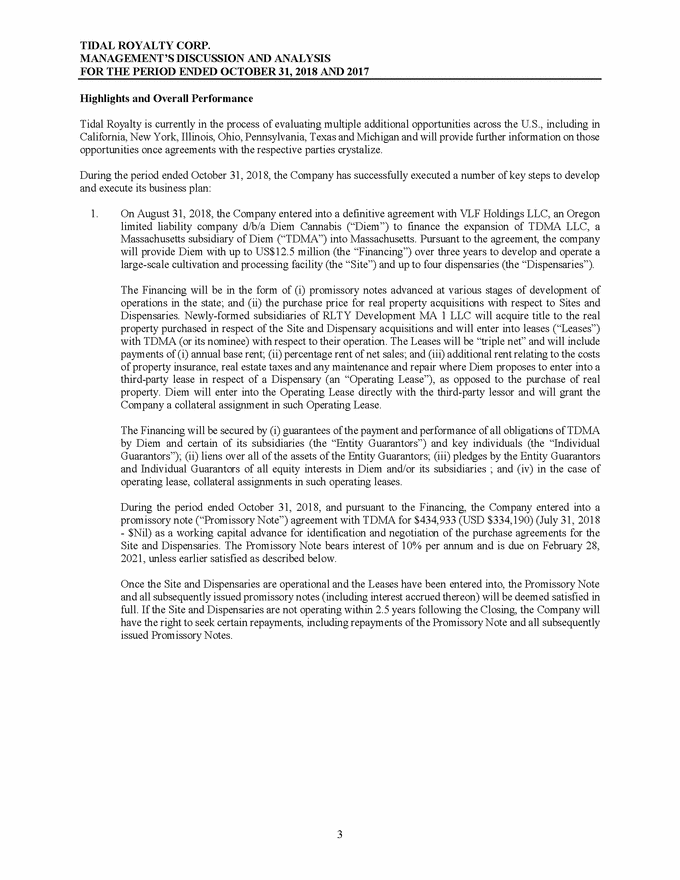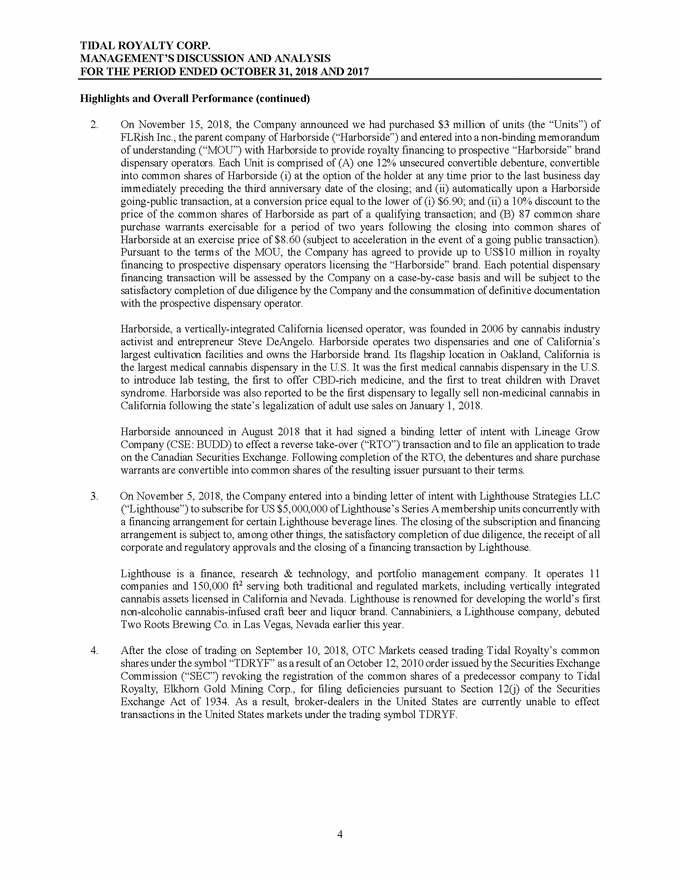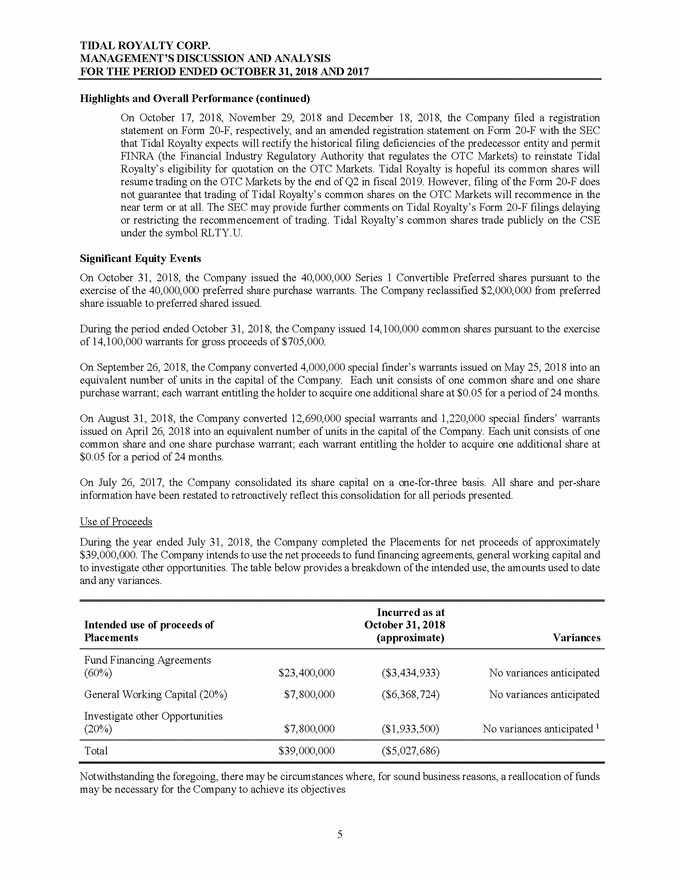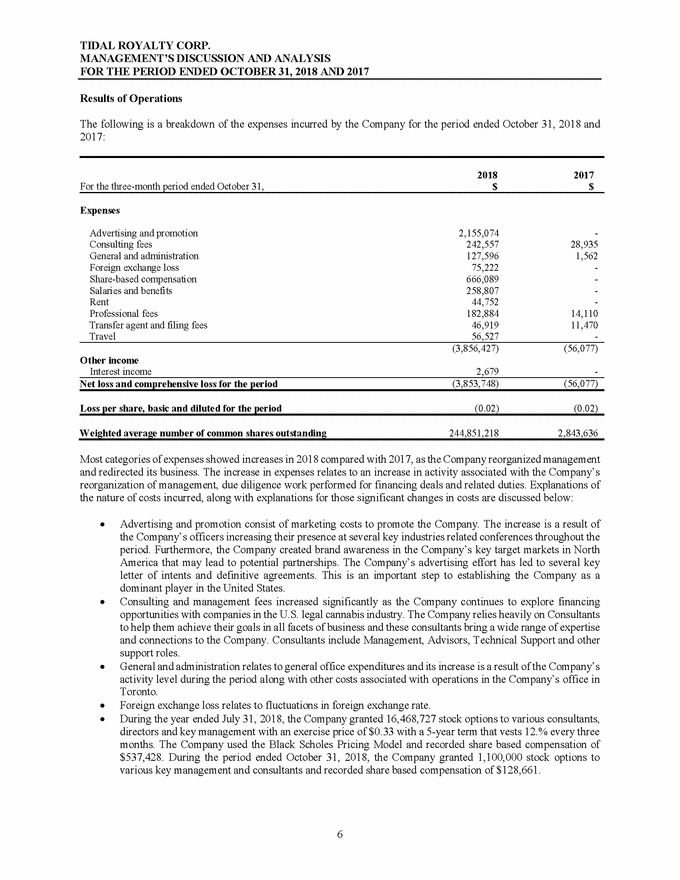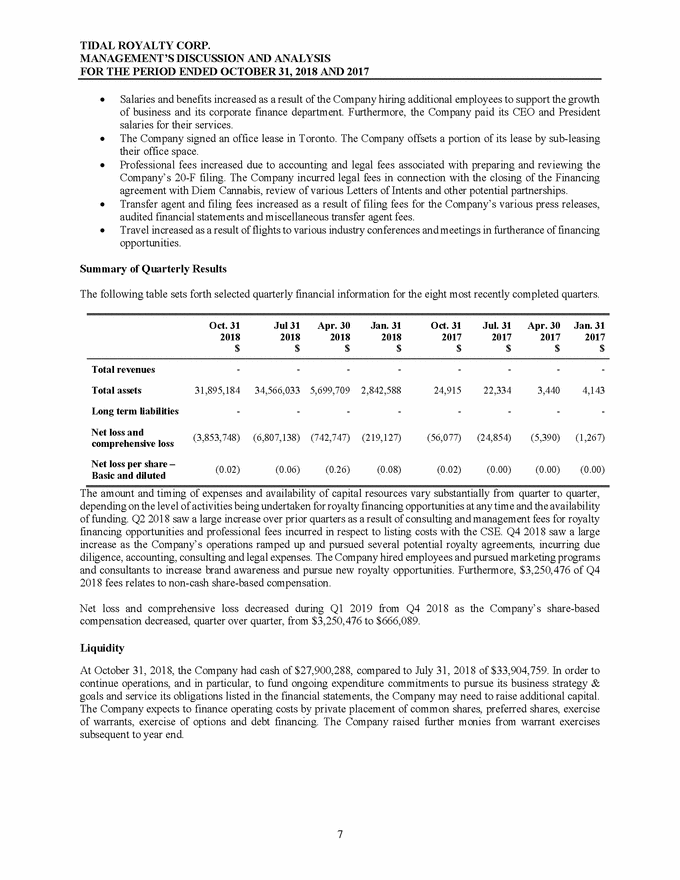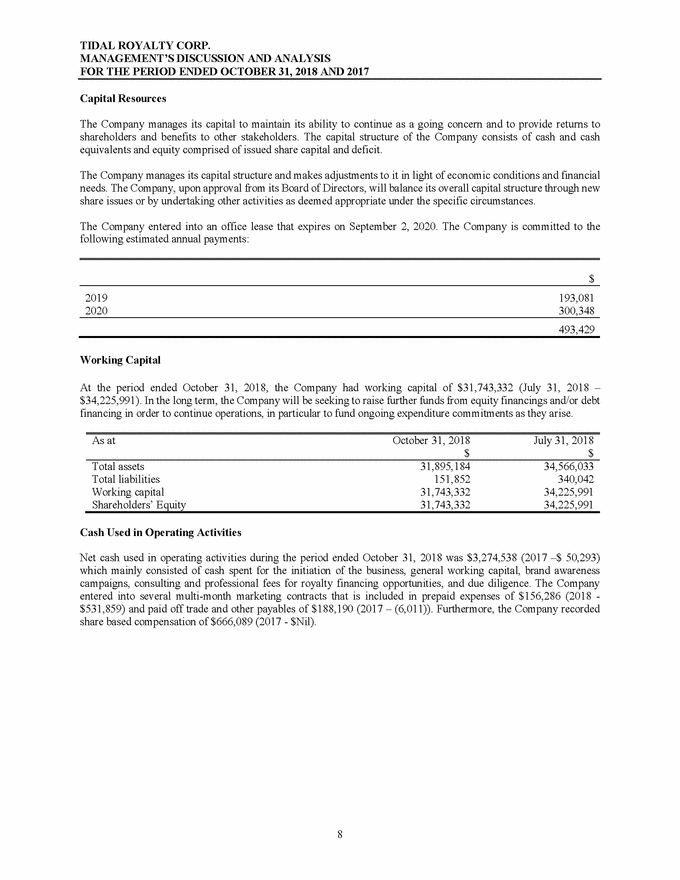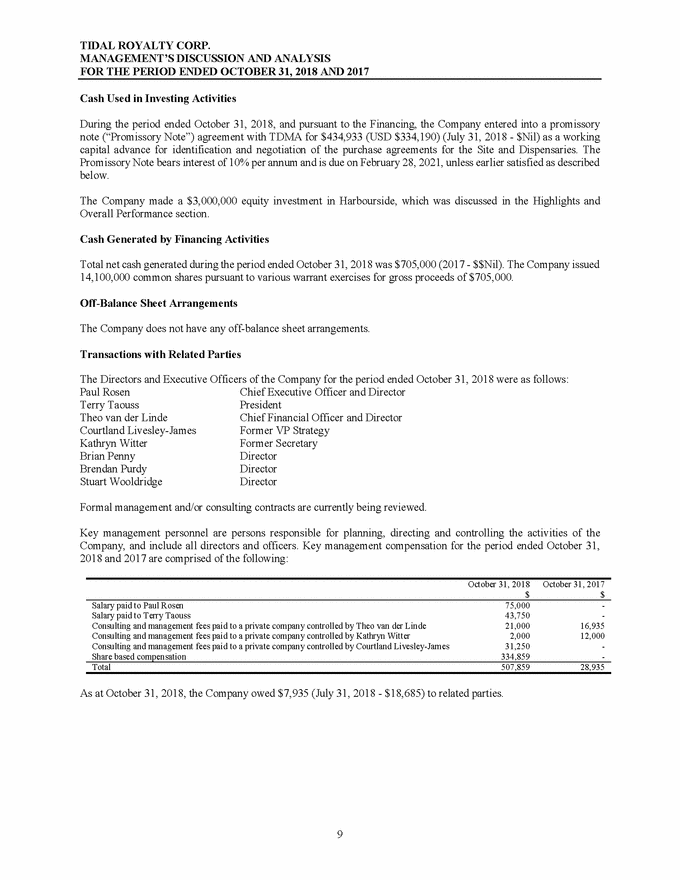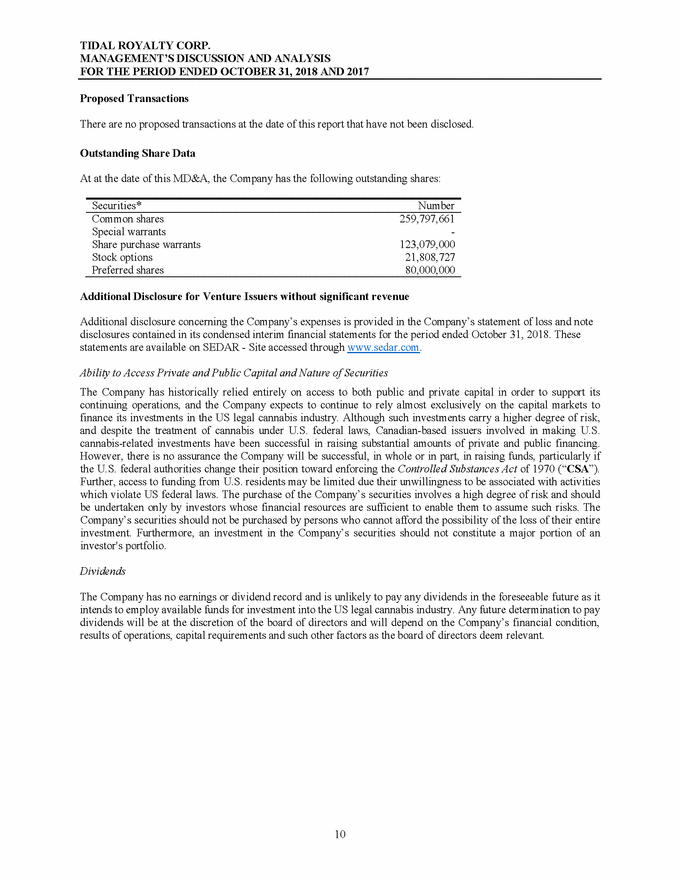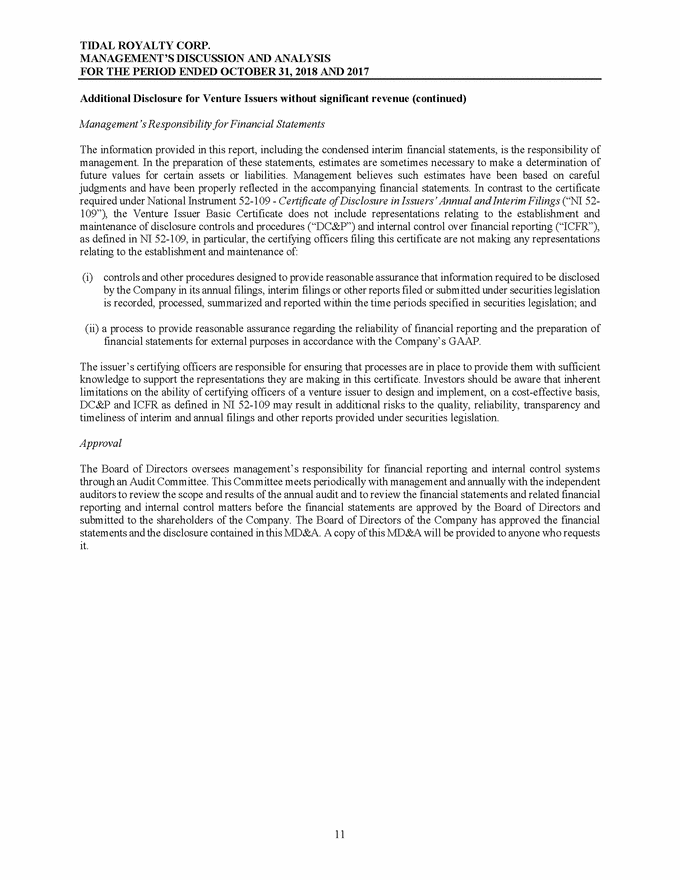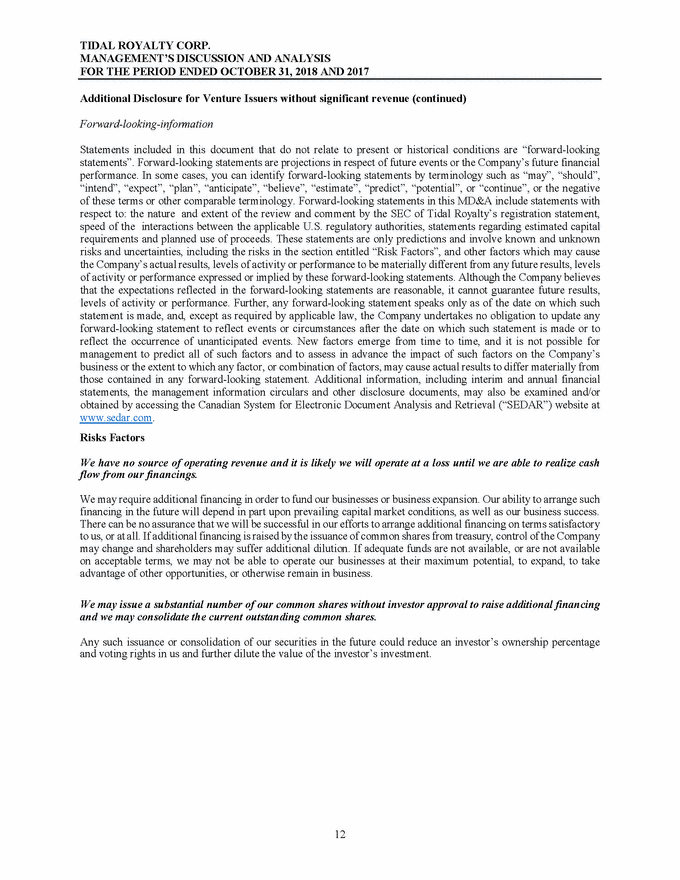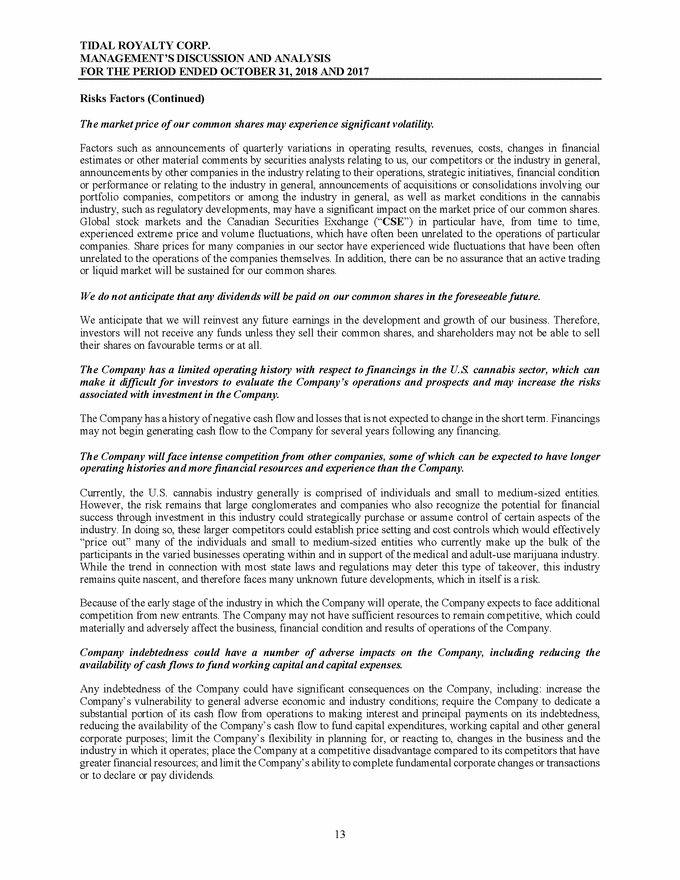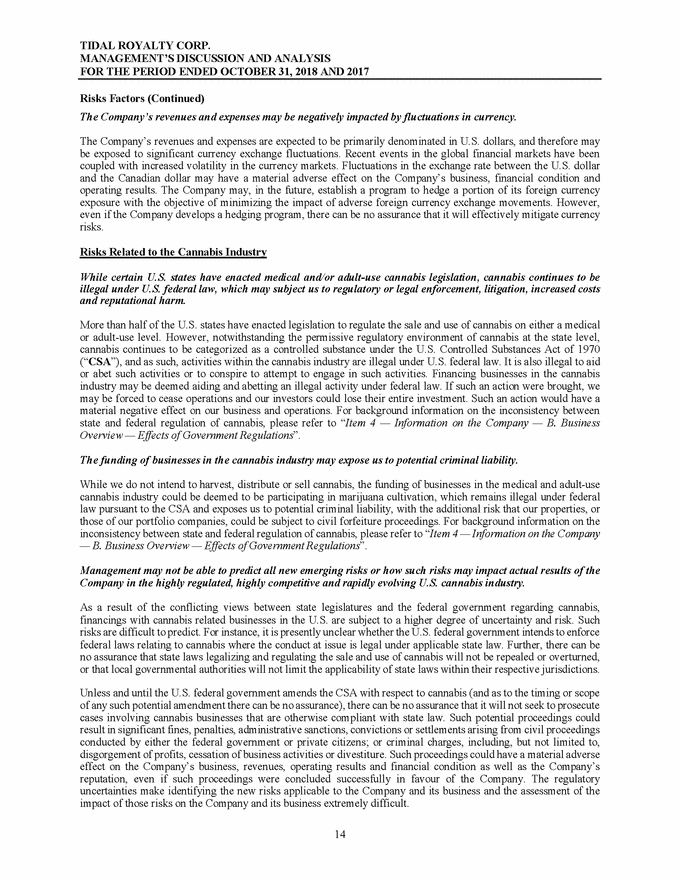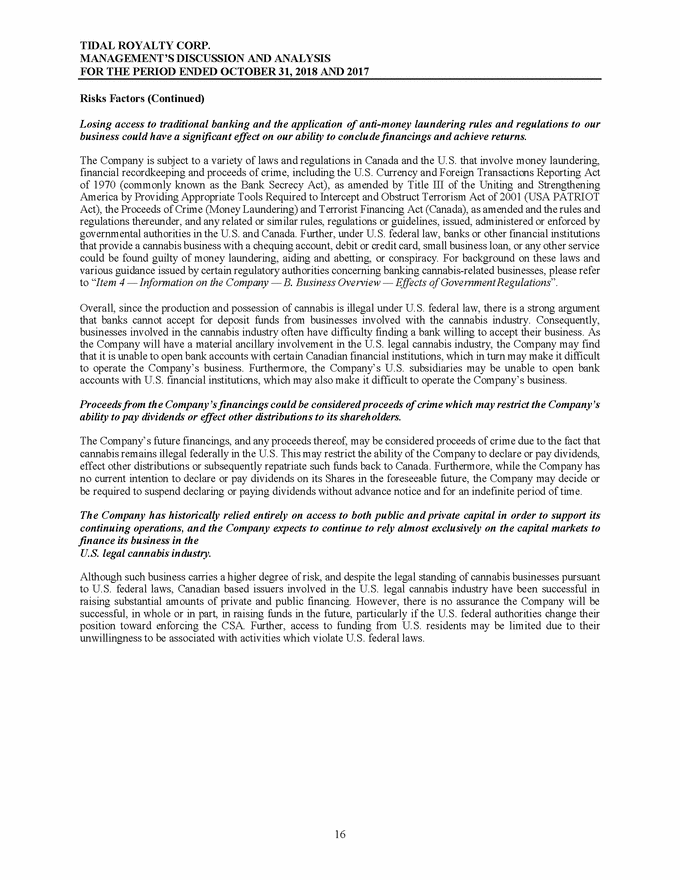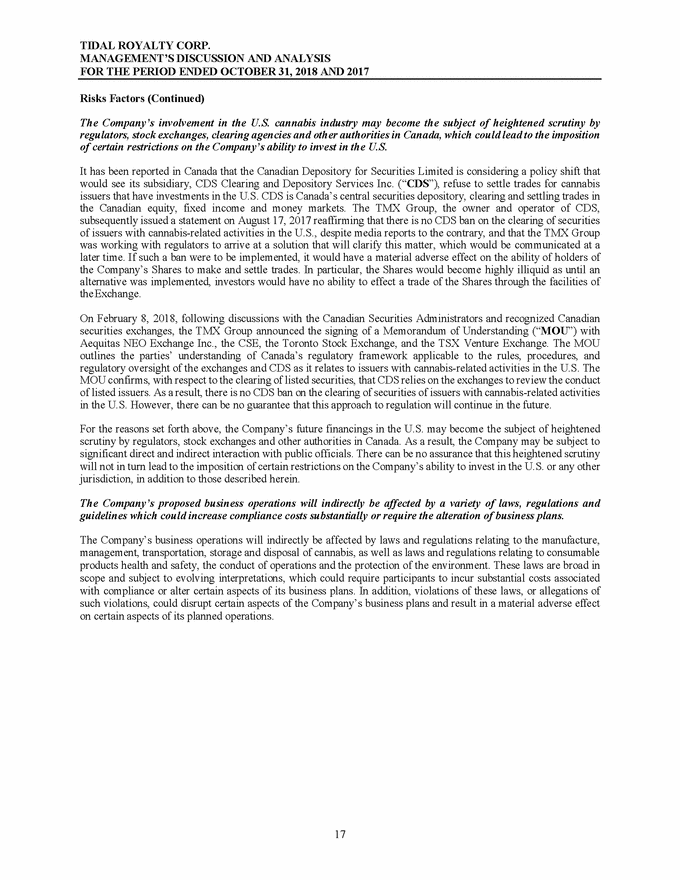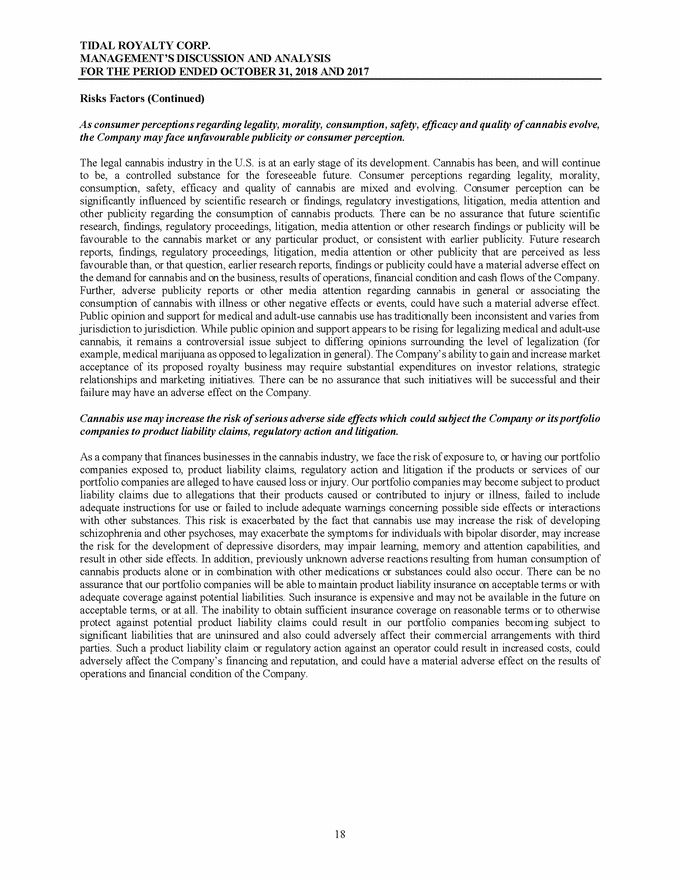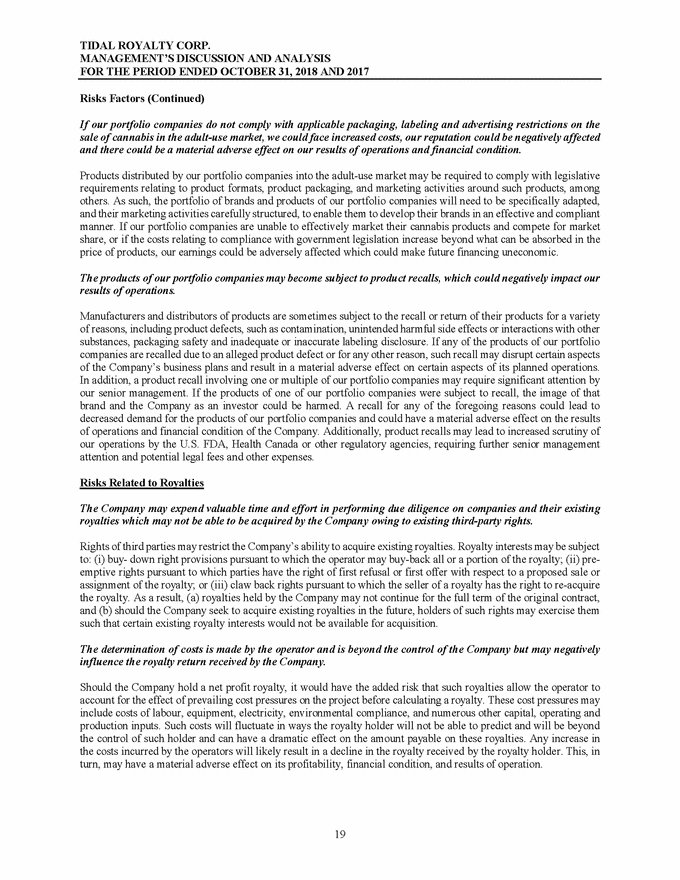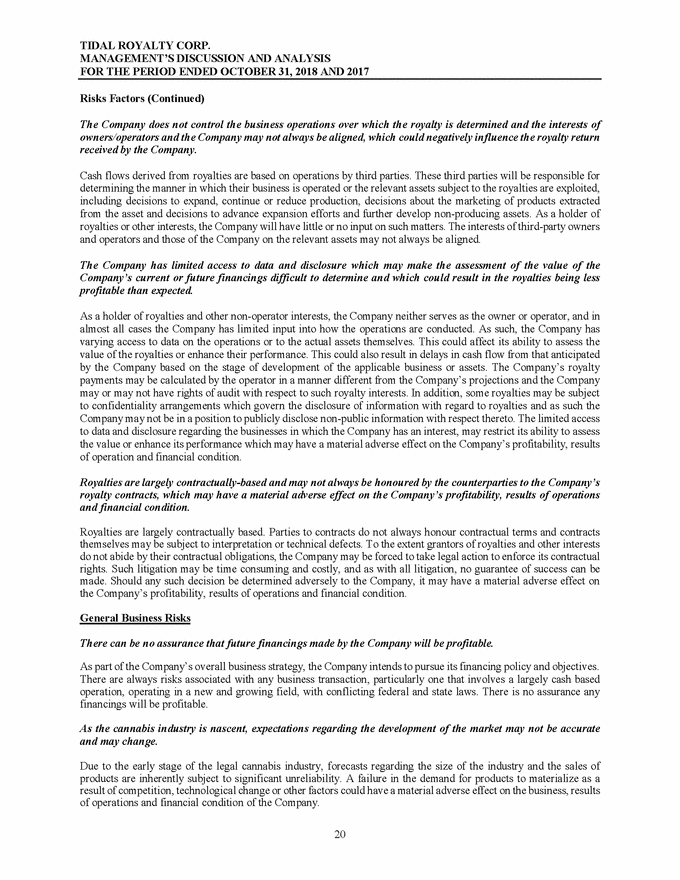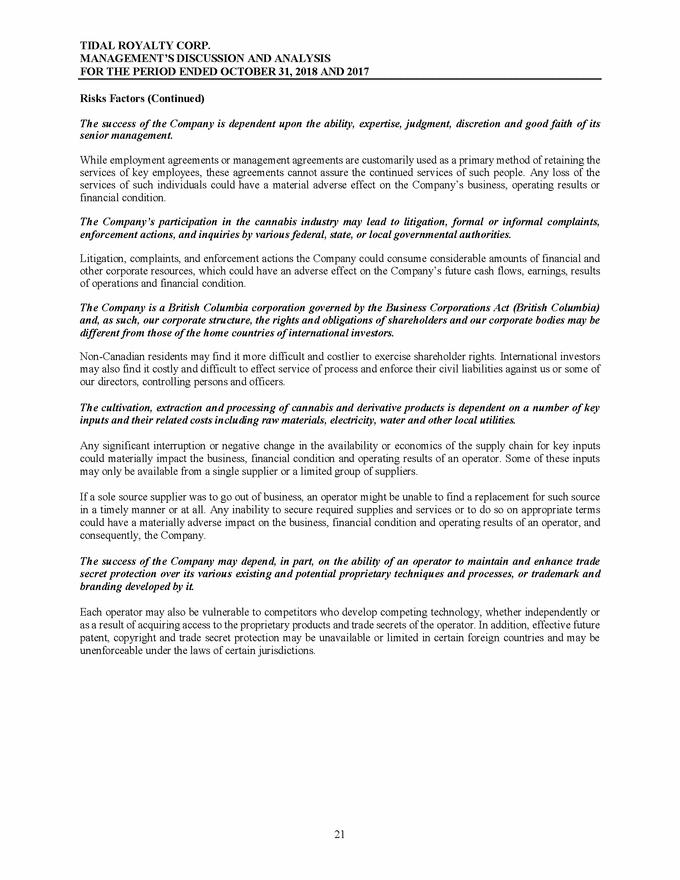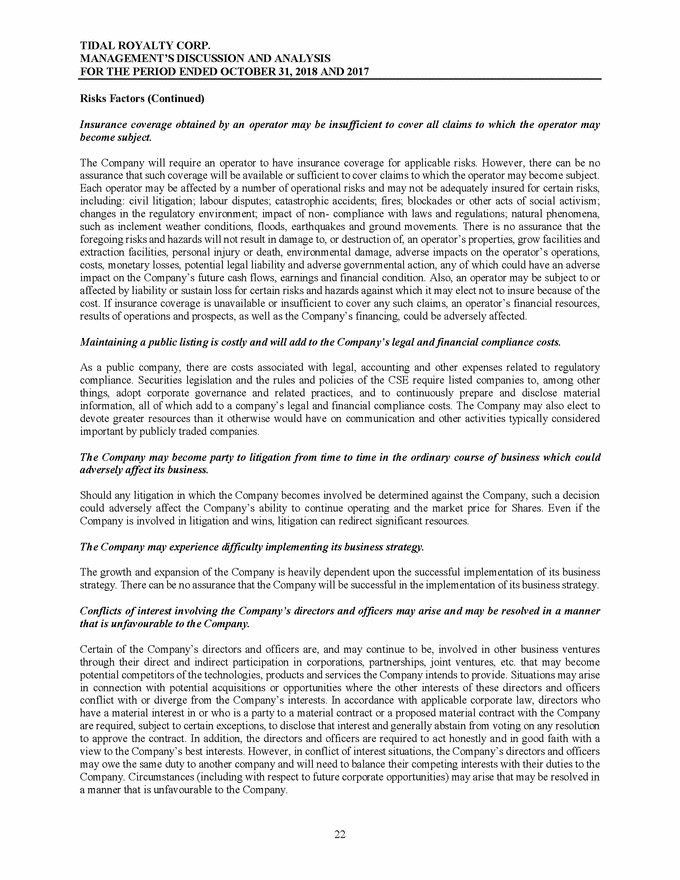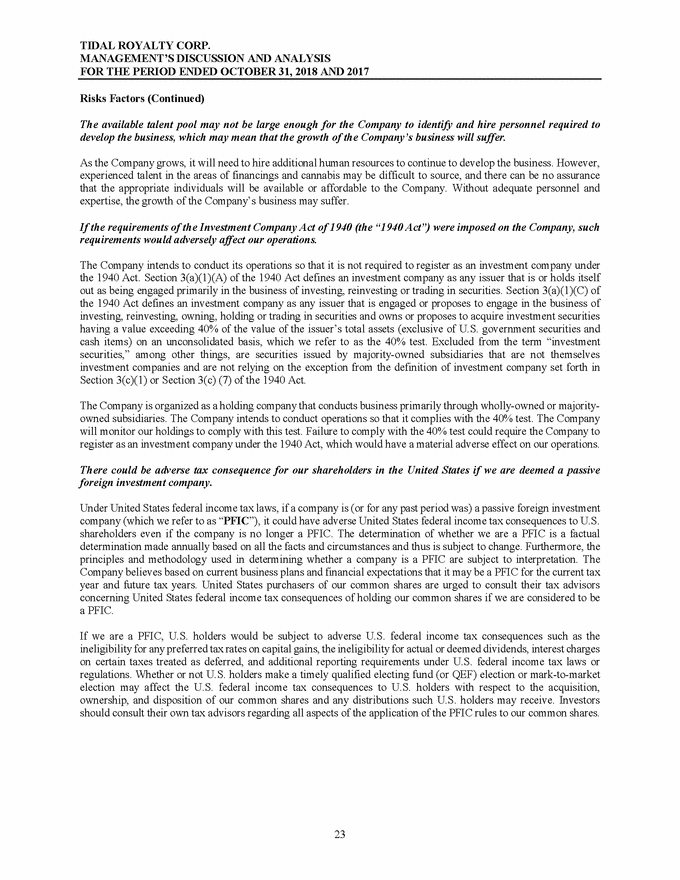FORM 5 QUARTERLY LISTING STATEMENT Name of Listed Issuer: Tidal Royalty Corp. (the “Issuer”). Trading Symbol: RLTY.U This Quarterly Listing Statement must be posted on or before the day on which the Issuer’s unaudited interim financial statements are to be filed under the Securities Act, or, if no interim statements are required to be filed for the quarter, within 60 days of the end of the Issuer’s first, second and third fiscal quarters. This statement is not intended to replace the Issuer’s obligation to separately report material information forthwith upon the information becoming known to management or to post the forms required by the Exchange Policies. If material information became known and was reported during the preceding quarter to which this statement relates, management is encouraged to also make reference in this statement to the material information, the news release date and the posting date on the Exchange website. General Instructions (a) Prepare this Quarterly Listing Statement using the format set out below. The sequence of questions must not be altered nor should questions be omitted or left unanswered. The answers to the following items must be in narrative form. When the answer to any item is negative or not applicable to the Issuer, state it in a sentence. The title to each item must precede the answer. (b) The term “Issuer” includes the Listed Issuer and any of its subsidiaries. (c) Terms used and not defined in this form are defined or interpreted in Policy 1 – Interpretation and General Provisions. There are three schedules which must be attached to this report as follows: SCHEDULE A: FINANCIAL STATEMENTS Financial statements are required as follows: For the first, second and third financial quarters interim financial statements prepared in accordance with the requirements under Ontario securities law must be attached. If the Issuer is exempt from filing certain interim financial statements, give the date of the exempting order. First Quarter (three month period) ended October 31, 2018. FORM 5 – QUARTERLY LISTING STATEMENT January 2015 Page 1
